חורשף מצויץ
| Scientific name: | Atractylis comosa Cass. | |
| Synonym name: | Feinbrunia speciosa (DC.) K.Schmid | |
| Common name: | Beautiful Distaff-thistle | |
| Hebrew name: | חורשף מצויץ | |
| Family: | Compositae / Asteraceae, מורכבים |
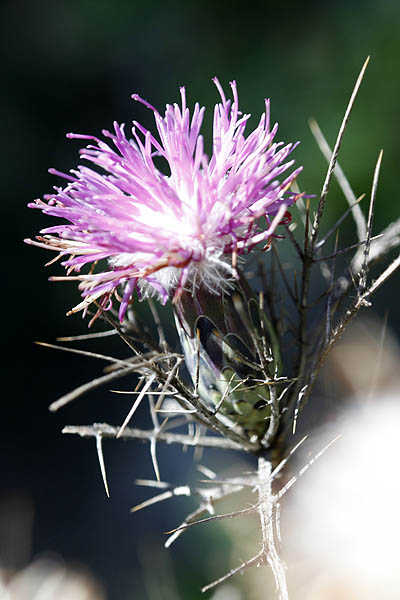
|
| Life form: | Hemicryptophyte | |
| Spinescence: | Leaves, bracts | |
| Stems: | The stems are covered with rough bristles | |
| Leaves: | Spinescent leaf, rosette, alternate, entire, dentate or serrate | |
| Flowers: | Hermaphrodite, purple, spinescent bracts | |
| Fruits / pods: | Homogeneous seeds-fruits | |
| Flowering Period: | July, August, September, October, November | |
| Habitat: | Batha, Phrygana | |
| Distribution: | Mediterranean Woodlands and Shrublands, Montane vegetation of Mt. Hermon | |
| Chorotype: | Mediterranean | |
| Summer shedding: | Ephemeral |
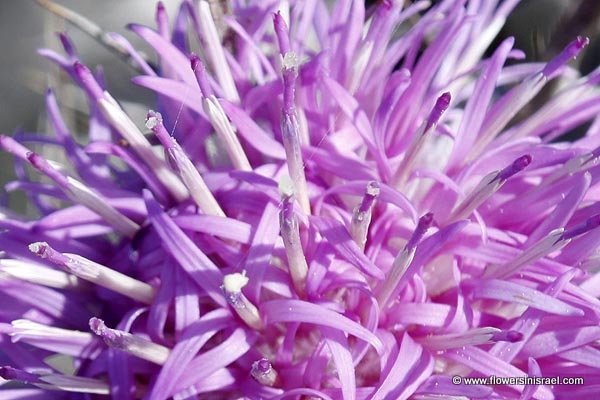
Derivation of the botanical name: Atractylis, Latin atractylis and Greek atraktylis for a thistlelike plant used for making spindles. comosa, with long hair growing in tufts. Feinbrunia, named for Naomi Feinbrun-Dothan (1900-1995), an Israeli botanist. speciosa, speciosus, beautiful, good looking, showy. The Hebrew name: חורשף, Hurshaf, Aramaic, Arabic: خرشوف, Khurshaf.
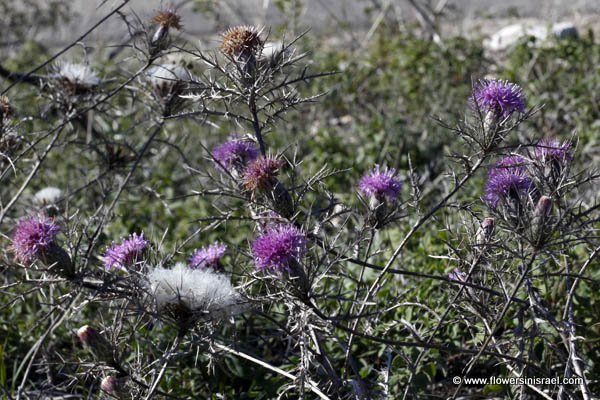
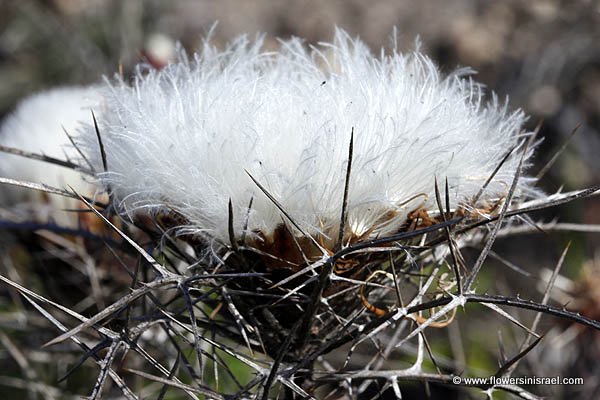
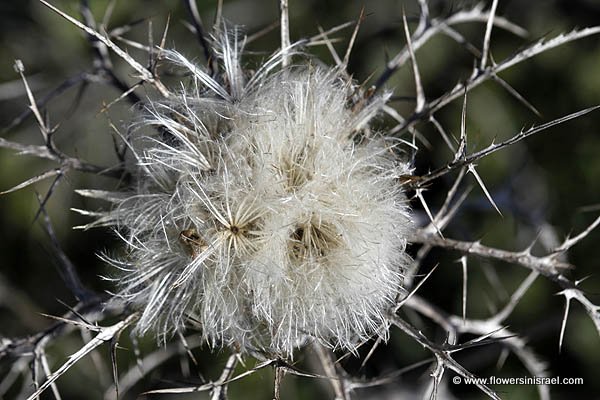
|